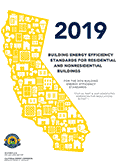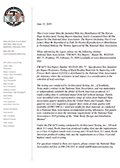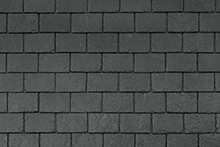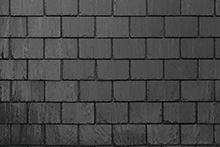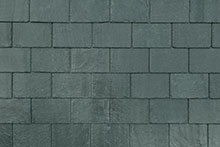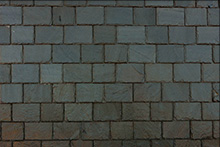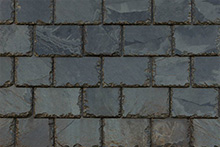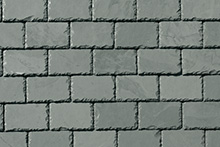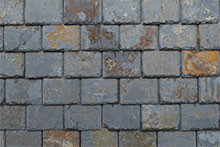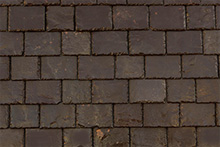California Slate Company, Inc.

Slate Testing
ASTM Testing of Different Slates
 The American Society for Testing and Materials (ASTM) is an international standards organization that develops technical standards for a wide range of materials. They developed three tests for roofing slate to determine the water absorption, the fracture strength, and the resistance to corrosion. Their highest rating of S1 would be awarded to slate with low water absorption, high fracture strength, and substantial resistance to corrosion. Slate with an S1 rating has a projected life span in excess of 75 years. S2 is rated for 40 to 75 years. S3 is rated for 20 to 40 years.
The American Society for Testing and Materials (ASTM) is an international standards organization that develops technical standards for a wide range of materials. They developed three tests for roofing slate to determine the water absorption, the fracture strength, and the resistance to corrosion. Their highest rating of S1 would be awarded to slate with low water absorption, high fracture strength, and substantial resistance to corrosion. Slate with an S1 rating has a projected life span in excess of 75 years. S2 is rated for 40 to 75 years. S3 is rated for 20 to 40 years.
-
Water Absorption Test
The maximum absorption test measures how much water the slate rock will absorb. It’s a simple test: a piece of slate rock is weighed dry and then submerged in water for a certain time period. Then the rock is weighed again. Higher quality rock will have absorbed less water and will have gained less weight after being soaked than lower quality rock.
-
Fracture Strength Test
The “Modulus of Rupture” test is designed to determine a slate’s fracture strength – the load required to break the stone. A piece of slate is subjected to an ever-increasing load while bridging two points of a specified distance. The heavier the load required to break the slate, the higher the quality of the slate.
-
Resistance to Corrosion Test
A piece of slate’s resistance to corrosion is tested by submerging the slate in a weak solution of acid for a particular amount of time and then examining the surface of the slate. The deeper the acid solution was able to penetrate the rock, the lower the quality of slate. Generally, harder rock is more resistant to corrosion than softer rock.
These tests are fairly straightforward for a single piece of slate. But unlike the uniformity found in a manufactured product, slate is a natural product and each individual piece is idiosyncratic with lots of variability—particularly in fracture strength. A random sample of poor quality slate could pass tests required of higher quality slate, or vice versa. To combat the variability, the tests are often repeated on about 20 individual pieces of each slate being tested—which can become expensive.
These tests do reveal something about the quality of slate produced by a particular quarry. If slate samples from a particular quarry consistently rate high, then the quarry itself contains at least some good stone. But provenance isn’t enough. The quality of stone in a particular quarry can change depending on the level being mined, among other factors.
If a particular load of slate is going to be installed in a climate which has extreme freeze and thaw weather cycles, it is important to ensure that it has an extremely low rate of absorption – otherwise it is certain to fail over time.
Solar Reflectance Index for Cool Roofs
The Solar Reflectance Index (SRI) is a measure of the roof’s ability to reflect solar heat, as shown by a small temperature rise. It is defined so that a standard black (reflectance 0.05, emittance 0.90) is 0 and a standard white (reflectance 0.80, emittance 0.90) is 100.
In California, the Energy Commission’s Title 24 Standard is the statewide building code regulating energy efficiency standards.
Tests of Slate’s Resistance to Hazards
 The
National Slate Association
(NSA) conducts general testing of slate’s technical characteristics, including resistance to hail and fire.
The
National Slate Association
(NSA) conducts general testing of slate’s technical characteristics, including resistance to hail and fire.
The maintenance and replacement of this architectural legacy is a substantial part of the slate industry, but slate is also a material of the future. Proof against fire, hail, wind and extreme weather make it the first choice for any serious architectural project. Buildings designed for extended lifespans must of necessity choose slate, the most time-tested and economical roof. Above all, slate is unmatched as an aesthetic choice. Cascading graduated roofs, and the intrigue of weathering greens and variegated roofs are unique concepts that defy imitation. Slate has done its time. It is a proven material.

